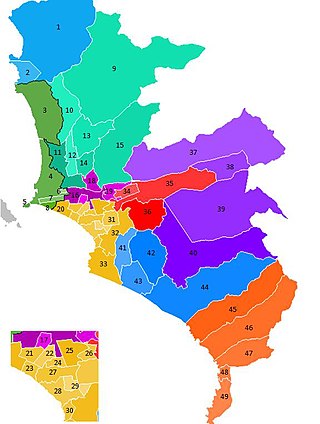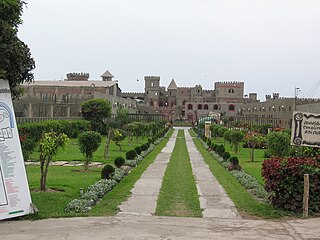History
In the era of the Inca Empire, in the government of Topa Inca Yupanqui, after conquering the coastal town of the Chillón river valley, he ordered the construction of bridges and roads in order to facilitate the passage of the Imperial Army to strengthen the expansion of Tahuantinsuyo. It is in this way that a very large stone appears on the ditch that was located on the area where the district capital is located today, which at the time of the Inca era was used to cross the swamps, which allowed taking the roads through the hills to Tambo Inga and continuing to La Ensenada to cross the Chillón River by the Inca bridge.
When the Incas found out about the proximity of the Spanish, they destroyed the bridges and roads; the big stone ended up at the bottom of the ditch.
The Inca bridge of La Ensenada was rebuilt in the Viceroyalty and blown up in 1998 due to the El Niño Phenomenon.
As the swamps dried up, the dry part was covered with grass; This gave rise to Doña Francisca de Aguilar, at that time owner of Copacabana, to buy the gramadales. For those moments the famous stone continued to provide its bridge service even though the step was made from, jump to jump; because the swamps prevented the passage on the other side, for this reason, this swampy and uninhabited area took the name of "Puente Piedra" in Republican times and when the haciendas required a greater number of workers for cotton and sugar cane crops. In the year 1870, the railway from Lima to Ancón was built, and a station was built in the area, which was called "Puente Piedra Station". Around it a hamlet was formed and its agricultural inhabitants dried up the swamps and turned the grasslands into productive areas.
In 1906, the Italian Tomás Marsano appeared, asking the Peruvian government to grant the gramadales under the pretext of an irrigation project. His opponent was, at this time, Rigoberto Molina, owner of Copacabana. Marsano, for his part, insisted on claiming ownership of those lands, which were to the west of the Copacabana hacienda, despite knowing that the land had belonged to the Municipality of Lima since the viceroyalty. The inhabitants confront Tomás Marsano through a judicial process, taking refuge in the possession of the land, which with great effort they managed to put at the service of agriculture.
In 1918, Tomás Marsano legally bought the Copacabana farm and trying to take full possession, Marsano lashes out at the peaceful farmers trying to evict them or impose abusive charges. After that, the inhabitants prevented Tomás Marsano from taking possession and on January 20, 1921 they created the "Society of Puente Piedra Community Members", and later, directed by Juan Lecaros, the Community prosecuted Marsano. In 1922, during the Leguía's Oncenium, the struggle achieved the most resounding triumph: the expropriation law of the Puente Piedra land was promulgated, declaring those who currently own it the owners.
The district was founded on February 14, 1927 by Law No. 5675, segregating itself from the old Carabayllo District. In this way, the Carabayllo District loses its most important homestead, the maritime strip of Ventanilla, the train station, the sugar mill and various haciendas.
Later, until the 60's, the city of Ventanilla was founded in the western part, which finally in the Revolutionary Government of the Armed Forces in 1969 created the Ventanilla District in Lima, but days after it was included within the Constitutional Province of Callao, losing more half of its initial territory.














